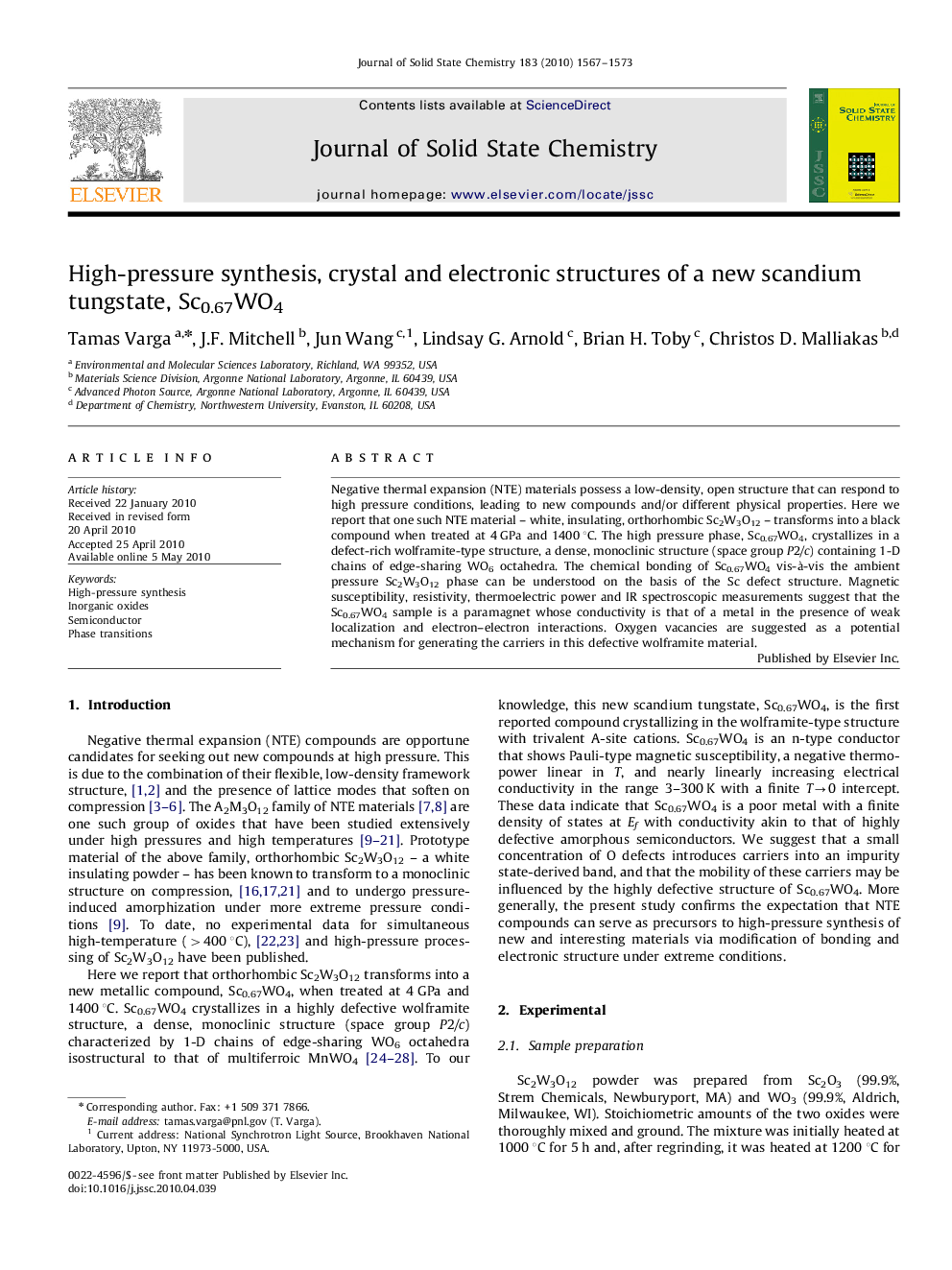| Article ID | Journal | Published Year | Pages | File Type |
|---|---|---|---|---|
| 1331152 | Journal of Solid State Chemistry | 2010 | 7 Pages |
Negative thermal expansion (NTE) materials possess a low-density, open structure that can respond to high pressure conditions, leading to new compounds and/or different physical properties. Here we report that one such NTE material – white, insulating, orthorhombic Sc2W3O12 – transforms into a black compound when treated at 4 GPa and 1400 °C. The high pressure phase, Sc0.67WO4, crystallizes in a defect-rich wolframite-type structure, a dense, monoclinic structure (space group P2/c) containing 1-D chains of edge-sharing WO6 octahedra. The chemical bonding of Sc0.67WO4 vis-à-vis the ambient pressure Sc2W3O12 phase can be understood on the basis of the Sc defect structure. Magnetic susceptibility, resistivity, thermoelectric power and IR spectroscopic measurements suggest that the Sc0.67WO4 sample is a paramagnet whose conductivity is that of a metal in the presence of weak localization and electron–electron interactions. Oxygen vacancies are suggested as a potential mechanism for generating the carriers in this defective wolframite material.
Graphical AbstractNTE material orthorhombic Sc2W3O12 transforms into a new compound, Sc0.67WO4, when treated at 4 GPa and 1400 °C. Sc0.67WO4 has a defective wolframite structure, and is a paramagnet whose conductivity is that of a metal in the presence of weak localization and electron–electron interactions. Oxygen vacancies are suggested as a potential mechanism for generating the carriers in this material.Figure optionsDownload full-size imageDownload as PowerPoint slide
